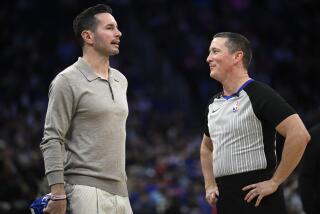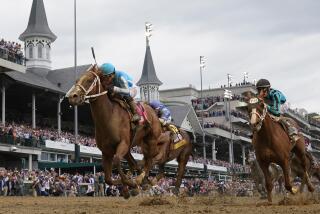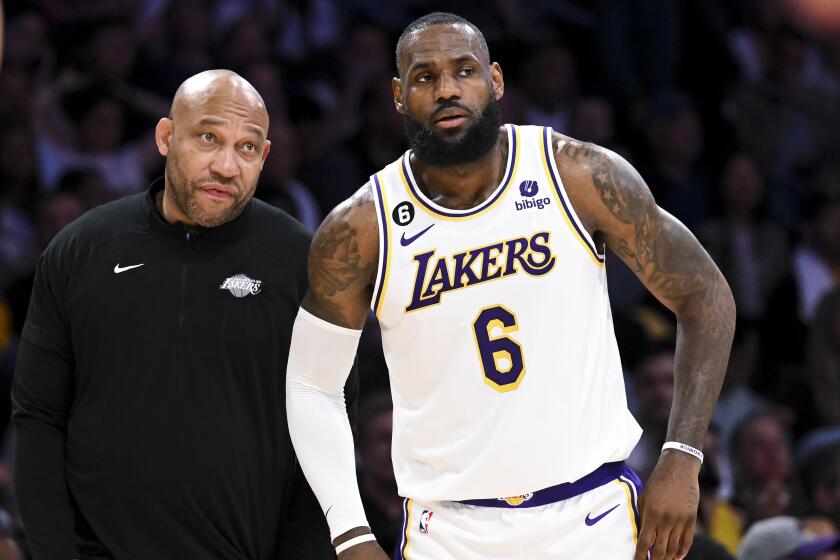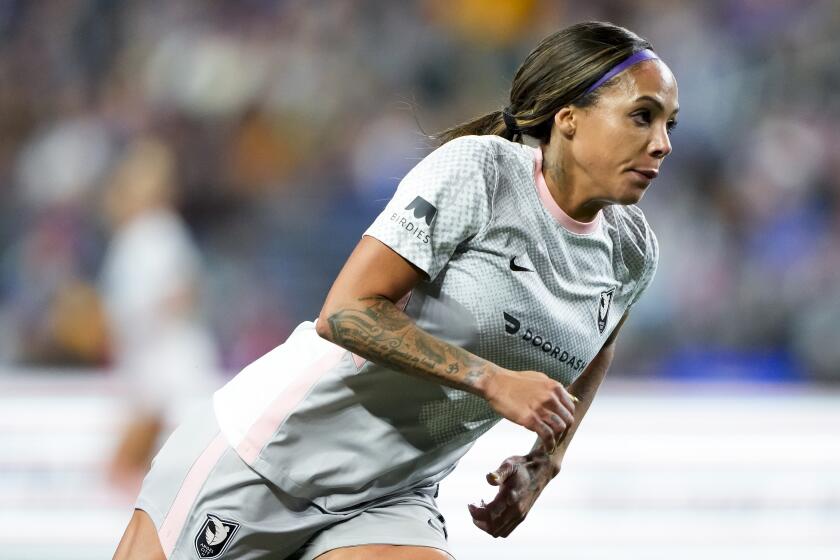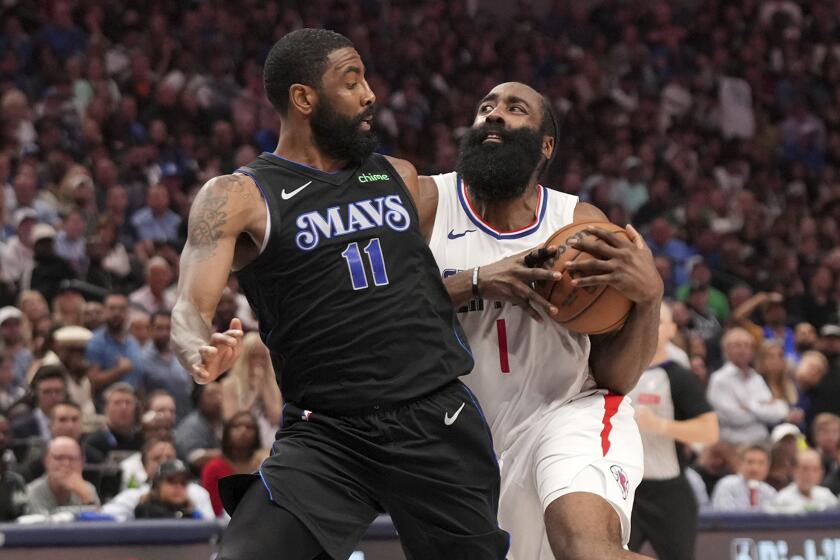It’s More Like Draining Camp
Editor’s note: Lonnie White, a staff writer and former USC receiver, can appreciate the rigors of an NFL training camp. Here are his recollections from the summer 10 years ago spent in the New Orleans Saints’ camp.
*
I never met Korey Stringer, but I felt as if I knew him when it was released that he died of heatstroke Wednesday, one day after collapsing at practice during training camp with the Minnesota Vikings. Like thousands of other former football players who have endured summer practices in unbearable heat, I couldn’t help but think what happened to Stringer easily could have happened to me.
Flash back to late July 1987. I was a rookie wide receiver and kick returner with the New Orleans Saints in their training camp at Hammond, La. The average summer temperature for Hammond is 92 degrees with 60% humidity. Not the first place you would think of to hold practices as often as three times a day in the summer. But for Jim Mora, the Saints’ head coach at the time, and his staff, Hammond was the best place to separate men from boys. The Saints had never reached the playoffs and Mora was determined to turn them into winners with a difficult camp.
For every player in Hammond that summer, from Pro Bowl linebackers to free-agent receivers, the message was clear: The harder you worked and the more you gave is how you made the team’s regular season roster.
I felt the heat immediately. But like everyone else in camp who had played football since grade school, this was nothing new. No one really complained about the brutality of the camp because this is what you always did before you played football.
For a fall and winter sport, football is really about summer pain.
It was that way for me playing Pop Warner and high school football in New Jersey and college at USC. By the time you reach the NFL, the phrase “Suck it up” is a major part of your vocabulary.
I arrived to training camp in the best shape of my life. I was able to run sprint after sprint and even lift weights with some linemen. But wearing a heavy helmet and thick shoulder pads can take a toll on anyone and for me, it was my weight. After weighing 191 pounds at the start of camp, I was down to 178 four practices later. It was so hot, I couldn’t eat and when I did, it didn’t stick. In the early days of football, coaches discouraged drinking fluids during practice. But that’s not the case any more and it wasn’t a factor with the Saints nearly 14 years ago.
Because I was regarded as a high-risk candidate for heatstroke, New Orleans trainer Dean Kleinschmidt made sure that I had access to lots of fluids and iced towels. He assigned someone to make sure I drank as much Gatorade and water as possible. Everywhere I turned, there was a filled cup in my face. At first it was funny, but it didn’t take long before it got on my nerves, especially when my camp roommate, Derrick Taylor, would laugh at me throughout the night.
Football is such a macho sport, and I remember feeling bad having someone chase me around the field making me take a water break. However, it did help me regain the weight and get through training camp.
Dr. Stanley Speegle, an emergency room physician at Harris Methodist Southwest Hospital in Fort Worth, wrote for WebMD.com that “Any time the heat index is 100 degrees or higher, there is a danger of heat-related illness. Hot, humid climates are the worst because you can’t get out of the heat. Your body’s evaporating mechanism doesn’t work as well.”
Football players take this challenge to a different level. When the temperature is 98 degrees and the humidity is 60%, the heat index is 123 degrees and that’s out of uniform. But you can’t always take a break when you feel like it in football, where not fighting through pain is a sign of weakness.
Coaches make sure you understand that winners don’t allow pain or discomfort to slow them down. It’s this message that is driven home to players every day in training camp. And it’s an argument that is hard to dispute after you’ve won a tough game because you didn’t quit. The joy athletes get from playing together and winning as a team is priceless. It’s what keeps players going when they feel like quitting.
That’s the only way to understand what happened to Stringer.
Early in his career, he had struggled with weight problems before slimming down and making the Pro Bowl last season. He reported to camp at 335 pounds and said he was in the best shape of his career, but also was in difficulty Monday, the first day of camp, when he was taken off the practice field on a cart.
It’s easy to imagine that Stringer was trying to show his coaches and teammates that he was a team player Tuesday when he vomited at least three times during the morning practice but didn’t summon a trainer until the drills had ended.
Maybe if he had stopped and asked for help after he threw up the first time, he would still be alive today. The NFL can only hope that something will be learned from Stringer’s death. He’s not the first player to die this way and probably will not be the last.
I was lucky. Although I was dizzy and weak at times, I listened to my body and never suffered heatstroke. We can only hope Stringer’s death will lead more players to do the same.
More to Read
Get our high school sports newsletter
Prep Rally is devoted to the SoCal high school sports experience, bringing you scores, stories and a behind-the-scenes look at what makes prep sports so popular.
You may occasionally receive promotional content from the Los Angeles Times.
